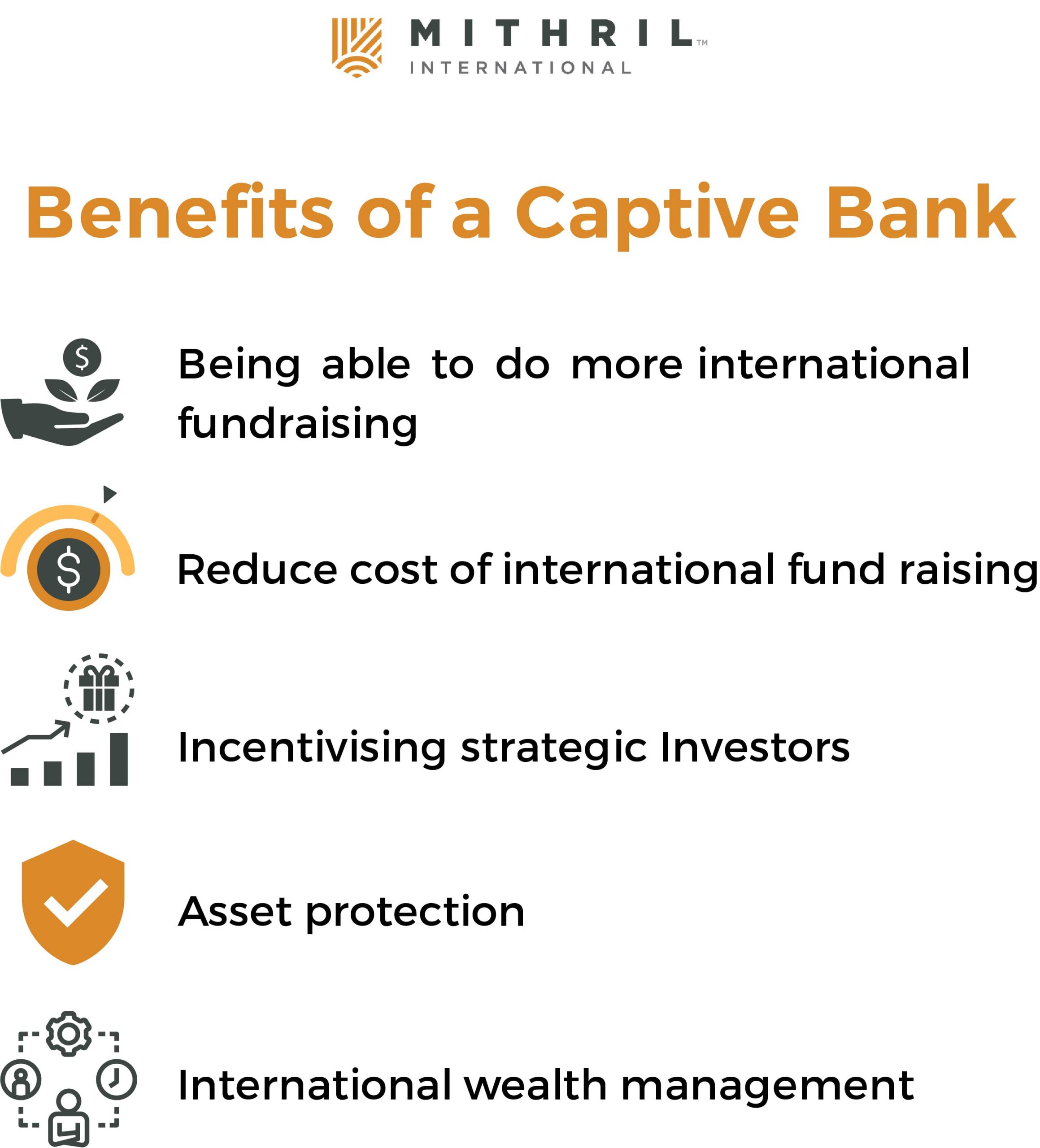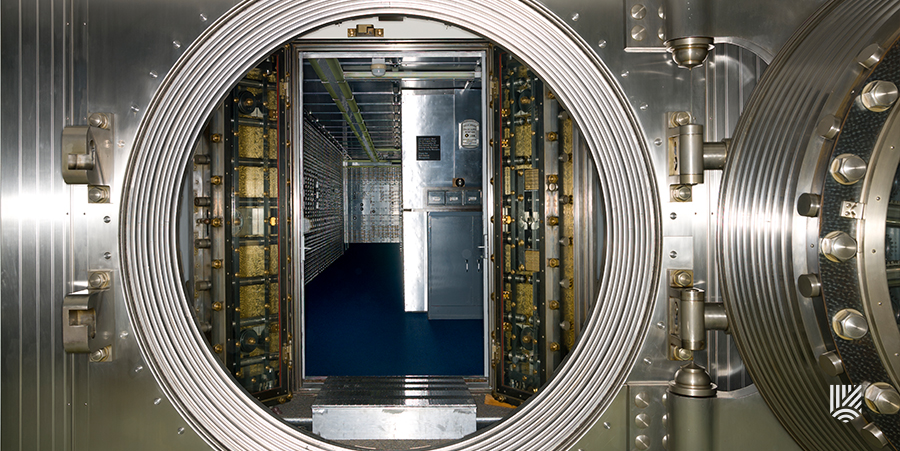The Captive Bank
If you are an owner-manager and are managing a General Partner (LP/GP) of an LP that is a Private Investment Fund (PIF), this newsletter will explain how Captive Banks can enable you to increase the ability of your PIF to attract investment in your business. A captive insurance company will create more international investment opportunities for US-Accredited investors while mitigating international risk.
Many US LPs and GPs that are PIFS shy away from international investment opportunities. It is mainly the large US institutions that take on international opportunities and thus reaps greater yields than are often available in the U.S. domestic PE market.
A major reason for this is that small owner-managed LPs and hedge funds have no “boots on the ground” in these international markets. Accredited investors and family offices see “international risk” and they stay far away. Why? Often there is no regulated platform for them to invest in. In the US domestic PE market, most PE funds are undertaking domestic investments and are unregulated. because they are operating under exemptions. Large PEs are registered with the SEC. Accredited Investors therefore must wait for institutions to step in who can afford the risk and then the LPs will invest at a lower level. This causes the US accredited and family offices to miss out on excellent investment opportunities throughout Latin America and Africa.
Many owner-managers in Latin America and Africa have projects and Joint Ventures that will generate superior yield, but US Accredited Investors cannot use small unregulated GP/LPs to make these international investments and overcome the information asymmetry.
The Captive Bank Solution
What is a Captive Bank?
A Captive “bank” is the terminology used to describe a Captive Reinsurance company owned by a group of companies, which can then economically function like a bank. A Captive Insurance company can behave economically like a bank because it can lend funds to other group members. This means that in a crisis, the Captive “Bank” which has invested conservatively and has benefited from tax deferral and other tax incentives, should be a source of more liquidity in crisis or whenever there is a need.
How does Captive Insurance work?
Captive Insurance is a stable financial insurance strategy that requires the maintenance of a statutory reserve to cover anticipated future claims. Captive insurance companies are a stable and secure way to finance the expansion of your business or purchase new equipment.
Captives can be used to insure risks related to long-term assets such as real estate, receivables, inventory, and even employees. Captives can also be used to ensure a wide range of business risks, from the more traditional property and casualty lines (such as general liability and workers compensation) to commercial crime and directors’ & officers’ liability coverage. Captive insurance companies often offer greater flexibility in designing policies for specific needs, whereas commercial carriers frequently have standard policies that do not work for your business.
Captives, as insurers with a statutory “reserve” requirement, are generally considered to be very liquid. Captives have been used for years and in many ways by large corporations, who typically borrow against their captive assets or use them as collateral for working capital or developing the business.
International risk and fundraising
It has become more difficult to raise capital from the US and international investors. Consider these three reasons for the increased difficulty in raising capital:
- Enhanced due diligence
- Borrowing against stock portfolios
- Private banks.
Benefits of a Captive Bank
Owner managers, who own a captive insurance company are not subject to the discretion of a credit committee of a third-party organization. This is because captive insurance companies can provide liquidity from sources beyond the traditional banking infrastructure.
Accredited investors can work with owners to establish Captive Banks. As the owner of the business and the Captive “Bank”, the owner is less exposed to a third-party credit committee that may not want to lend to the project, especially when global credit is tightening. Often the reason credit committees won’t want to lend is they are not operators. They are not incentivized to see risk-return opportunities the way an owner-manager will see them.
A Captive Bank is highly regulated. GP/LPs or family offices may prefer those Captive Shares issued in conjunction with shares of a Private Investment Fund for Accredited investors. The Investment Fund manager would be a licensed asset manager or private bank that Is registered with Florida State regulators as appropriate or has applied to the SEC for the foreign private fund adviser exemption.
Once there is a Captive Reinsurance strategy in place, investors could take shares in the Captive or in a Private Investment Fund that owns the project insured by the Captive. Also, US LP/GPS could use a trust that owns a debenture over the controlling shares of the Captive Reinsurance company. A debenture secures the assets of the operating company, for the benefit of shareholders of the fund. (The operational effectiveness of a debenture In a civil law jurisdiction may not be the most practical strategy.)
There are several additional benefits to a captive bank strategy such as:
 1️. Being able to do more international fundraising
1️. Being able to do more international fundraising
By using a captive bank, you can greatly increase the amount of capital that you can raise from Accredited investors, GP/LPs, and Family Offices in the USA. The Captive bank is essentially a strategy that can be used to incentivize accredited investors.
2️. Reduce the cost of international fundraising
A Captive Reinsurance company acts to mitigate international risk in the business. For US accredited investors this is especially attractive because many accredited investors are hesitant to invest in cross-border or international businesses.
- Incentivizing strategic investors
By restructuring the commercial risks of the group into a Captive reinsurance company located in an international financial center, you as the owner can change the incentives for accredited investors by enabling them to invest in a business that has a built-in mitigation strategy.
4️. Asset protection.
Having a Captive reinsurance company that acts like a bank is a very good asset protection strategy. You can own the shares of the Captive Reinsurance company in a trust or through your own Private Investment Fund
- International wealth management.
A Captive Reinsurance company allows access to better investment platforms and legitimate deferral of taxation. It Is a regulated platform that serves as a very good international source of funds. When necessary, it also can finance the owner Personally or a group of companies. This strategy is also commercially better than leveraging a life insurance policy held by an insurance company that you don’t own. Because a Captive Insurance company is an active business company, your local CFC rules will exempt this structure from corporation tax.
A tangible international risk mitigation strategy
A captive bank solution mitigates international risk. US private equity firms, family offices, and accredited investors often have compliance policies that restrict international investment due to high international economic risk. A captive insurance company is a specific international risk mitigation strategy. When the US and international investors see a real risk mitigation strategy as opposed to just documented risk factors, much inertia to raising capital in the US or Canada will be removed.
Owner-operators of oil & gas projects who want to raise capital in the U.S. and from U.S. accredited investors need to mitigate international risk. Many U.S. investors only invest in domestic US projects. Non-institutional investors will have an appetite for returns but the risk for them is higher. A Captive insurance company will mitigate that risk and increase the number and type of international projects they will invest in.
Tax Incentives for US Accredited Investors
A Captive Reinsurance company provides a legal and tax-efficient way to move cash outside of countries in Latin America or Africa and accumulate foreign currency. Captive insurance companies are tax efficient as the withholding tax on insurance premiums paid from Latin America is less than dividends, interest, or royalties.
The Captive Reinsurance company is also very tax Efficient for US persons – a US2.2M per year of Underwriting premiums are exempt from US corporation tax and GILTI.
If a client can offer US Family offices or larger US accredited investors shares in the Captive reinsurance company, they will be providing a significant financial incentive. Captive insurance companies have substantial tax incentives for US investors.
You might be wondering why don’t most Accredited investors in the US create captives to take advantage of these incentives. That is because Captives are difficult to establish as there must be a real commercial risk at play. All in all, a captive with commercial reality will be very attractive to US investors.
Locating the Captive Bank
The Bahamas and Barbados are two excellent platforms to locate a Captive bank. The Bahamas Private Investment Fund and the Captive Bank could be tax residents in Barbados. Barbados has a double tax treaty with the USA which could provide certainty and protection of arrangements. These mechanisms can be used by US LP/GPS to bring international projects and yields within acceptable risk parameters.
Captive reinsurance for Oil and Gas & Agricultural export companies
If you own and operate an oil and gas field, and you also manage the oilfield services, a Captive Reinsurance company that acts like a Captive Bank will ensure that you can raise more capital from international investors to finance existing and new projects.
If you own an agricultural exportation company, exporters to the USA are going to need to raise capital to invest in “sustainability” and “ESG” to maintain access to the USA market. A Captive Bank will enable capital to be raised outside of Latin America/ Africa from internationally accredited investors. By using the Captive bank as the incentive ownership of a family business, the business can be retained for the family using trusts or foundations.


Leave a Reply